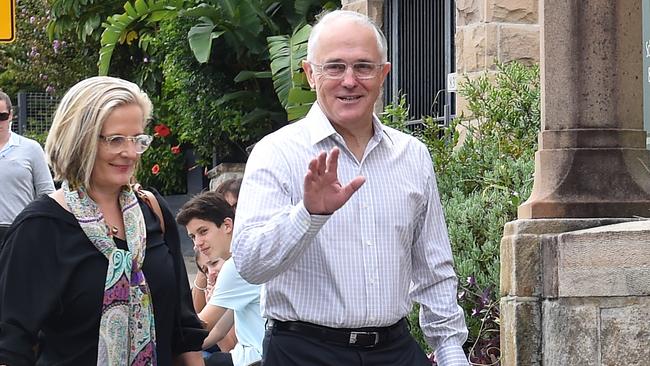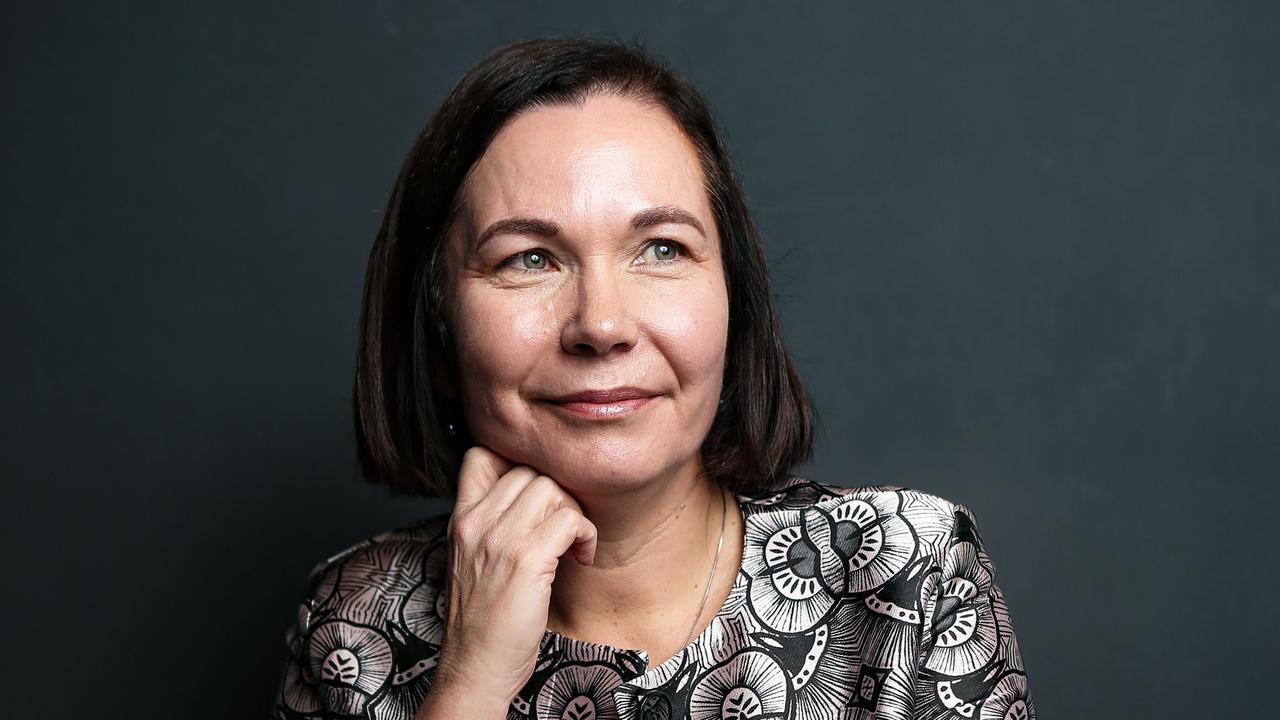Newspoll: dozen seats in danger for Malcolm Turnbull
Malcolm Turnbull’s government is facing the biggest two-party swing against it in Queensland, a Newspoll analysis shows.

Queensland is emerging as a problem state for Malcolm Turnbull’s government, which is also losing ground in Victoria, Western Australia and NSW as it counts down to a July 2 election.
The Coalition has also suffered a fall in support among men and country voters which is more than double the overall decline in its primary vote, according to an analysis of Newspoll surveys conducted exclusively for The Australian in the first three months of this year.
In the battleground state of Queensland, Coalition support has dropped six percentage points in two-party terms since the 2013 election.
However, it remains ahead with 51 per cent of the vote in two-party terms in the state, where it holds six seats by a margin of 6 per cent or less and a further four seats by between 6 per cent and 7 per cent.
Labor’s biggest slump is in South Australia and the opposition is losing women voters to the Greens, while its core support in NSW has flatlined since 2013.
While he remains easily preferred as prime minister over Bill Shorten, Mr Turnbull has suffered a hit to his satisfaction rating in all states, with voters in his home state of NSW the least satisfied and most dissatisfied with his performance.
The state-by-state and demographic breakdown of Newspoll surveys of 7508 people in the March quarter comes at the start of what could be a three-month run to an election and suggests the Coalition is on track to retain power with the loss of about 10-12 seats, leaving a reduced majority for Mr Turnbull to govern.
While support for the Coalition is higher in every state and on every measure than it was in the final quarterly poll under Tony Abbott’s leadership, the government is facing an overall fall in its primary vote of 1.6 percentage points and a two-party-preferred swing against it of 2.5 percentage points.
The strongest gains for the Greens are in Victoria and Queensland, and among women and country voters.
Labor has recovered ground in the Opposition Leader’s home state of Victoria after support fell to a four-year low: it has returned to being the ALP’s strongest state, with a primary vote of 37 per cent and a two-party-preferred lead of 53 per cent (up four points since the December quarter).
The Coalition is ahead everywhere else in two-party terms, with 53 per cent of the vote in South Australia (up five points in the quarter) and Western Australia (down one point) and 52 per cent in NSW (down one point).
In NSW, where the Coalition faces losing three seats because of a redistribution that nominally makes them likely Labor wins, the poll suggests a swing since the election of 1.6 percentage points against the government, which is facing preselection and organisational problems as it seeks to defend eight seats it holds by a recalculated margin of between 2 per cent and 4 per cent.
The swing to Labor in WA is 5.3 percentage points from a very low result in 2013, and would put the Liberals seats of Cowan and possibly Hasluck at risk.
In Victoria, a 2.8 percentage point swing would make the Coalition nervous about its marginal seats of Deakin, Corangamite and La Trobe. In both WA and Victoria, Liberal strategists had hoped the initial surge under Mr Turnbull could improve the chance of picking up key marginals where long-time Labor MPs are retiring.
The Coalition’s primary vote remains above 40 per cent in every state while Labor is below 40 in every state, and in SA the opposition’s standing has tumbled to a 5½-year low of 29 per cent.
Labor’s desire to win seats in NSW could rest on preferences from other parties as it has failed to lift its primary vote, which is unchanged since the election at 35 per cent. The Coalition is down 1.6 points to 45 per cent and the Greens up 2.7 points to 11 per cent.
In SA, both major parties are on the nose, with Labor’s primary vote tumbling 6.7 points in the biggest change in any state among the majors to 29 per cent and the Coalition is down 3.9 points to 41 per cent. The Greens rose 1.7 points to 10 per cent, but support for others, including the Nick Xenophon Team, is up nine points to 20 per cent.
In Queensland, the Greens have done best with a 3.8 point rise to a primary vote of 10 per cent and Labor is up 3.2 points to 33 per cent as the Coalition slid 1.7 points to 44 per cent and support for others, including the Palmer United Party, fell 5.3 points to 13 per cent.
In Victoria, the Greens have made up the most ground, rising 4.2 points since the last election to 15 per cent, with Labor up 2.2 points to 37 per cent and the Coalition down 1.7 points to 41 per cent.
In WA, the Greens’ surge in the middle of last year to 16 per cent has vanished, with the party marginally losing ground when compared with the election to be 9 per cent. Labor is up 5.2 points from historic lows to 36 per cent; while the Coalition’s primary vote is down 4.2 points to 47 per cent. It is its highest level in the country and a far cry from last year when its primary vote in WA was a 14-year low of 38 per cent.
Mr Turnbull suffered a hit to his satisfaction rating across every state, among both sexes and in every age group. He still rates well above where Mr Abbott had been but the Prime Minister’s net satisfaction rating — measuring the difference between those who are satisfied and those who are dissatisfied with his performance — is just two points in NSW; it is strongest at 14 points in WA.
Mr Shorten recorded a lift in satisfaction everywhere in the March quarter except in WA and among women but over 12 months his approval has significantly deteriorated, with the biggest falls in Queensland, among women and voters aged over 50. His net satisfaction rating is between minus 14 points and minus 38 points.
Newspoll shows women favour the Coalition by 42 per cent to Labor’s 34 per cent but small falls for both parties have contributed to a four-point rise for the Greens to 14 per cent. Female voters prefer Mr Turnbull as prime minister by 52 per cent to Mr Shorten’s 20 per cent.
Men are the strongest supporters of the Coalition at 44 per cent, but that is a 4.4 point drop since the election, while Labor is up 5.3 points from a low base to 35 per cent and the Greens are up 2.8 points to have the primary vote of 10 per cent of men.
About 58 per cent of male voters prefer Mr Turnbull as Prime Minister compared with 22 per cent who choose Mr Shorten.
The Coalition’s vote among capital city voters is virtually unchanged from the election at 44 per cent, but has tumbled 4.3 points to 43 per cent among country voters.
Labor is also virtually unchanged at a historic low of 35 per cent of city voters but has lifted its country share by 4.4 points to 34 per cent. The Greens are up almost four points among country voters to 11 per cent and 2.3 points to 12 per cent of city voters.




